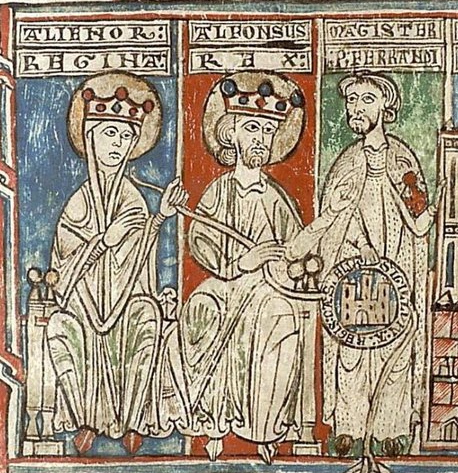POZA YAGÜE, Marta, "UNA CUM UXORE MEA: la dimensión artística de un reinado. Entre las certezas documentales y las especulaciones iconográficas"
Alfonso VIII y Leonor de Inglaterra: confluencias artísticas en el entorno de 1200 (eds. M. Poza Yagüe y D. Olivares Martínez), Madrid, Ediciones Complutense, 2017, pp. 71-108
Resumen
El paisaje monumental que recibió a la joven Leonor de Inglaterra, en 1170, cuando llegó a Castilla, estaba en su mayoría integrado por edificios tradicionales que, desde hacía años, repetían de forma inercial las fórmulas de románico pleno. Entre esta fecha y la de la muerte de la pareja, en 1214, el panorama cambió radicalmente. El tardorrománico y las primeras soluciones del gótico se fueron sucediendo, alcanzando en su geografía no solo el corazón del reino, sino incorporando para el desarrollo artístico los nuevos territorios meridionales que el rey ganaba para la Corona en el campo de batalla. Y en esta dinámica, el papel de los monarcas no fue, ni mucho menos, secundario. Actuando de forma conjunta, fundaron capillas, ampararon la construcción de nuevos monasterios de órdenes renovadas, de hospitales para peregrinos, extendieron cultos que tenían que ver con sus devociones particulares y protegieron la labor de clérigos, prelados y abades de confianza en los que se apoyaron para llevar a buen término sus iniciativas.
Palabras clave: Alfonso VIII y Leonor promotores artísticos, Románico, Gótico, Tomás Becket, heráldica e imagen regia.
Abstract
The monumental landscape that greeted the young Leonor of England at her arrival in Castile, in 1170, was mostly made up of traditional buildings that for years repeated out of habit the formulas of mature Romanesque architecture. Between this date and the death of the royal couple in 1214, the panorama changed dramatically. Late Romanesque and Early Gothic followed each other reaching in its geography not only the heart of the kingdom but also incorporating in this artistic evolution the new territories the King was wining for the Crown on the battlefield. And in this dynamics, the role of the monarchs was not, by any means, secondary. Acting together, they founded chapels, promoted the construction of new monasteries for renewed orders, hospitals for pilgrims, they spread worships that had to do with their private devotions and protected the work of trusted priests, bishops and abbots on whom they relied to make a success of their initiatives.
Key words: Alfonso VIII and Leonor as artistic patrons, Romanesque, Gothic, Thomas Becket, heraldry and royal image.

